On the canals of the West, the silhouettes of boats carrying Ca Mau mats have long since disappeared. There are also no more beautiful and famous love stories like in the old song “Love of a Mat Seller”. The mat weaving profession in the land at the end of the Fatherland has passed its prosperous days… gradually falling into oblivion.
Remember the time of weaving mats and buying gold
“ Ca Mau mats are dyed with bright colors. My work is very hard, exposed to the sun and rain. I will not sell these mats. I cannot find you, so I will use them as my pillow every night ” - The folk song in the famous vọng cổ song “Tinh anh ban mat” by composer Vien Chau once brought the name of the Ca Mau mat weaving profession to many generations of Vietnamese people.
Once upon a time, Ca Mau mats were carried by sampans to all provinces and cities in the West and Southeast. After many ups and downs, Ca Mau mats now no longer have the bustling scene of “mat boats and poles on the banks of Nga Bay canal”, no longer reaching the six provinces of the South and the splendid Saigon.
Following the instructions of the locals, we went to Tan Thanh commune (Ca Mau city), because according to the introduction, there are only a few households here that still maintain the craft of weaving mats. Next to a small house, Mr. Nguyen Van Tran Vu (65 years old) was sitting splitting reeds (a type of plant used to weave mats).
Right in front of Mr. Vu’s house, there is a small garden of sedge, and several plots of land adjacent to the road are also planted with jute (also known as ba tree) to get raw materials for the mat weaving profession. Mr. Vu said that in the commune, only his family still makes mats for sale. A few other households occasionally weave mats to serve their family’s needs, not for business anymore. The canal in front of Mr. Vu’s house, therefore, no longer has the sight of boats carrying Ca Mau mats downstream like in the past.
“ In the golden age, my family made a lot of gold every month from weaving mats. Now, we weave because we still love the job. I grow the materials at home, and after deducting expenses, we break even. In the past, we made taels of gold, now we make taels of bamboo, ” Mr. Vu laughed, pointing to the smooth reeds hanging on the roof.
Mr. Vu's hands quickly split the reeds. He splits each large reed into four, trying not to have too many big or too small fibers. He says that if the reeds are even, the woven mat will be beautiful. After splitting, he spreads the reeds out in the front yard to dry in the sun. He also takes out a few woven mats to dry in preparation for delivery to Kien Giang .
“ A relative in Kien Giang ordered nearly ten mats. I will go there for a wedding in a few days and then take them with me, ” Mr. Vu laughed, saying that it has been a long time since he has delivered mats far away. Now, only acquaintances who like to sleep on hand-woven mats call to order in advance. The price is not much of a profit.
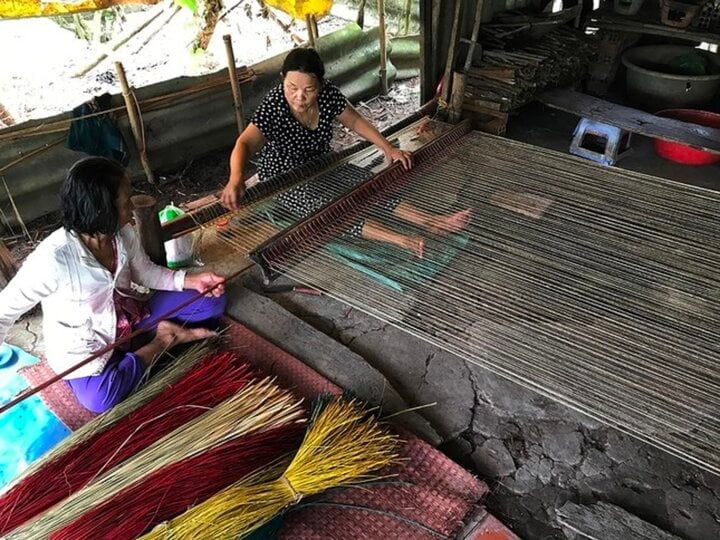
Sisters of Mrs. Cao Hong Le (Tan Thanh, Ca Mau) weave mats.
“ We are old, we can no longer work as factory workers or security guards, so we have to stay home and make mats. It is called earning money, but it is not worth much, ” said Mr. Vu. According to Mr. Vu, 1.8m mats currently only sell for a few hundred thousand VND per pair, after deducting costs, the weaving cost is insignificant.
“ If customers order a custom-woven mat, especially a wedding mat, the cost is higher. There are also meticulous people who make my husband and I weave a wedding mat together for good luck. These mats have additional patterns and decorative words, so they take a whole week to complete and usually cost several million ,” said Mr. Vu.
Hard to keep the job
While we were talking, Ms. Cao Hong Le (64 years old, Mr. Vu's wife) was busy in the hut weaving mats. Just a few cement tiles placed on a few wooden pillars creating a floor area of about ten square meters is where the family produces mats.
After dismantling the mats woven the day before, Mrs. Le stretched the straps to make a new pair of mats. Each strap was carefully threaded through the frame. Having been involved in the mat weaving profession for more than half her life, Mrs. Le’s back was bent forward, her figure slightly hunched. “ Now I can’t stand up or sit down, I feel dizzy, ” Mrs. Le said.
Mrs. Le said that the stage of stretching the belts is very important. The belts must have the same tension and be sturdy so that they do not shift when weaving. When the belts are stretched, Mrs. Le leans out behind the hut and calls her younger sister Cao Thi Hong to bring the dyed sedge ropes to prepare for weaving. In position, Mrs. Hong uses a hoe to thread each sedge rope through the belts for Mrs. Le to weave.
After each sedge string, Mrs. Le reaches to the outer edge of the mat, looping the sedge string around the belt several times to “bend the edge”. The person delivering the sedge string and the person weaving coordinate well, without missing a beat. When it comes to the part where patterns, motifs, letters, etc. need to be embossed, Mrs. Hong skillfully uses a hoe to thread the sedge string up and down; Mrs. Le coordinates by using her hands to lift and press the belt up and down like pressing the keys of a piano.
When the sedge ropes are interwoven, the color of the sedge ropes creates the desired pattern. It sounds simple, but each step must be calculated in detail, otherwise the pattern will not be as desired...
According to Mr. Vu, 1.8m woven mats are currently only sold for a few hundred thousand per pair, after deducting costs, the weaving cost is insignificant. “ If customers order a woven mat, especially a wedding mat, the cost is higher. There are also meticulous people who make my husband and I weave a wedding mat together for good luck. Pairs of mats like that have additional patterns and decorative letters, so it takes a whole week to finish, and usually cost several million ,” said Mr. Vu.
Mrs. Le grew up in Tan Thanh mat village. From the age of 14, she started the profession, learning to cut and split sedge. Gradually, her mother taught her how to weave mats, as a dowry for her daughter when she got married. Talking about skills, she said that she can weave any type of mat, can make any pattern, and the colors must be aesthetically pleasing. To have a beautiful mat, Mrs. Le said that experience is very important. For skilled people, each sedge fiber will be dried enough, not too brittle, not too wet; the dye color must be just right so it doesn't fade...
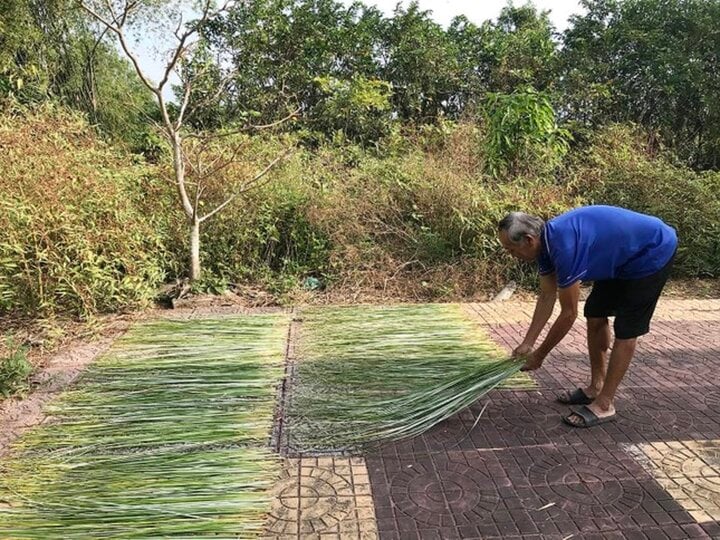
Mr. Nguyen Van Tran Vu dries sedge fibers to make Ca Mau mats.
The mat-making profession of Mr. Vu and Mrs. Le's family has been passed down to the third generation, but they are worried that there will be no next generation to continue the profession. Their children now all work far away, earning a living in jobs that have nothing to do with mat weaving. Young people in the village and commune are also not interested in this arduous profession.
At the age of "seventy years old", Mr. Vu said, he and his wife will try to maintain this profession for a few more years.
Ms. Le said that in recent years, through the introduction of the commune government, many tourists have come to her house to see with their own eyes the Ca Mau mat weaving profession - famous through the old song "Love of the Mat Seller". "The government informed us a few days in advance so that we could prepare, because we could not always see them weaving mats.
Every time we come, after the experience, tourists also give us a few hundred thousand," said Ms. Le, at the same time thinking that this could be a good sign of preserving the traditional profession of our ancestors to serve tourism .
(Source: Tien Phong)
Source


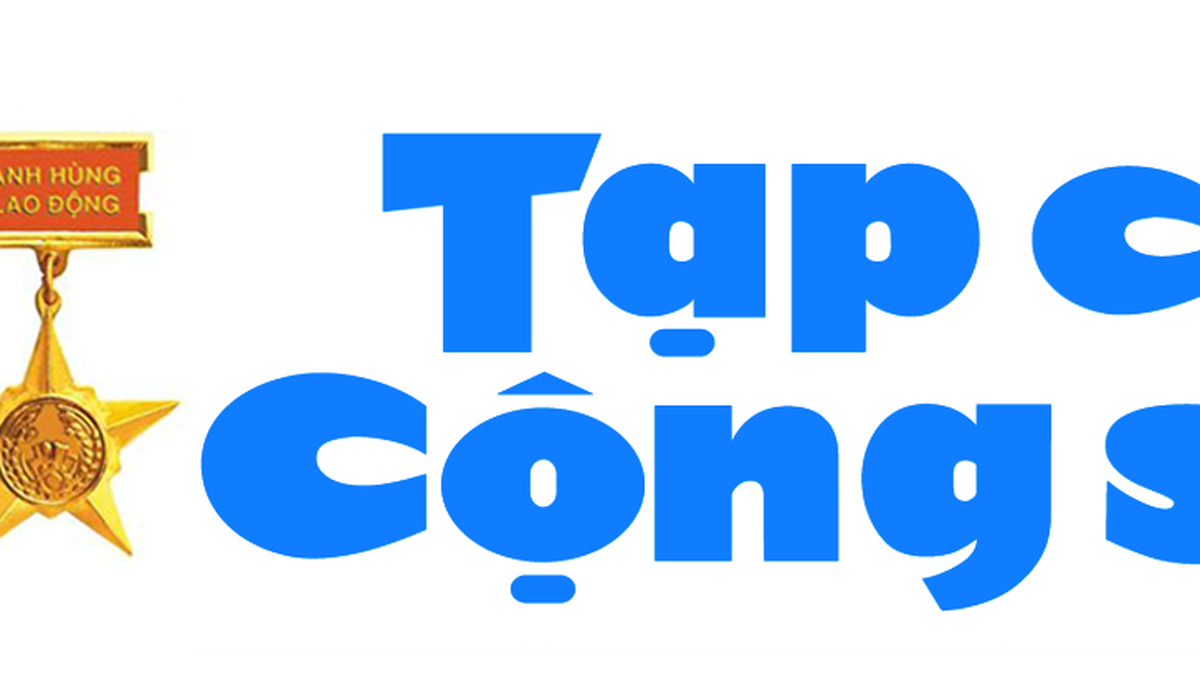
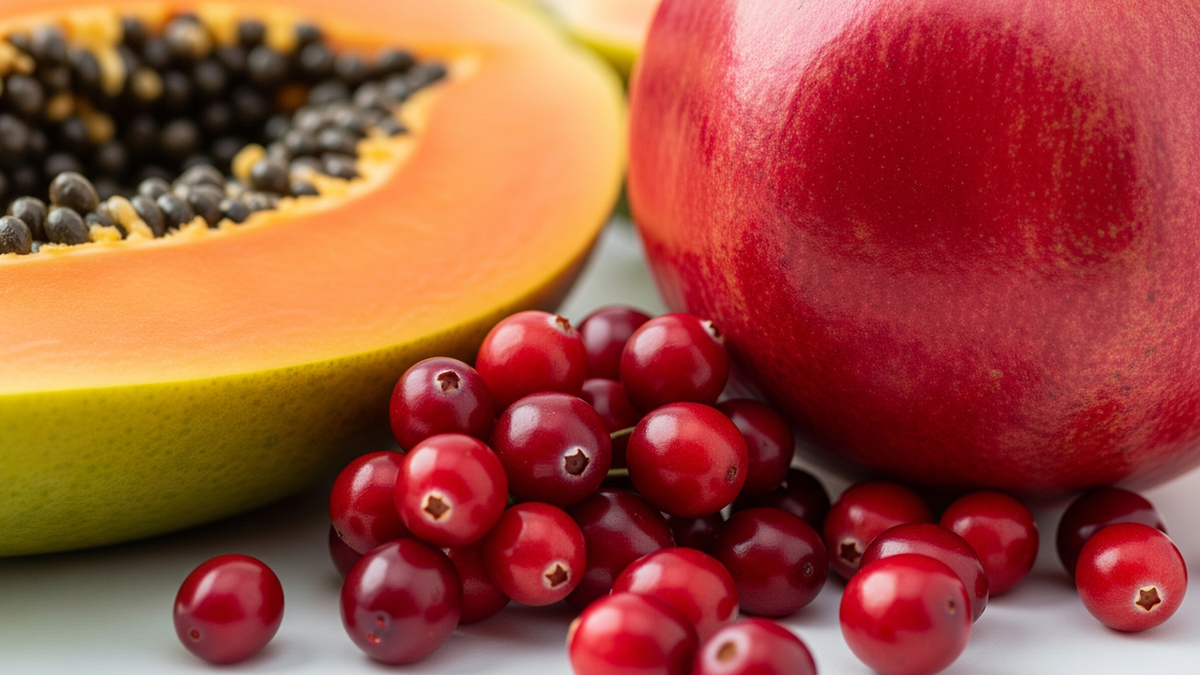


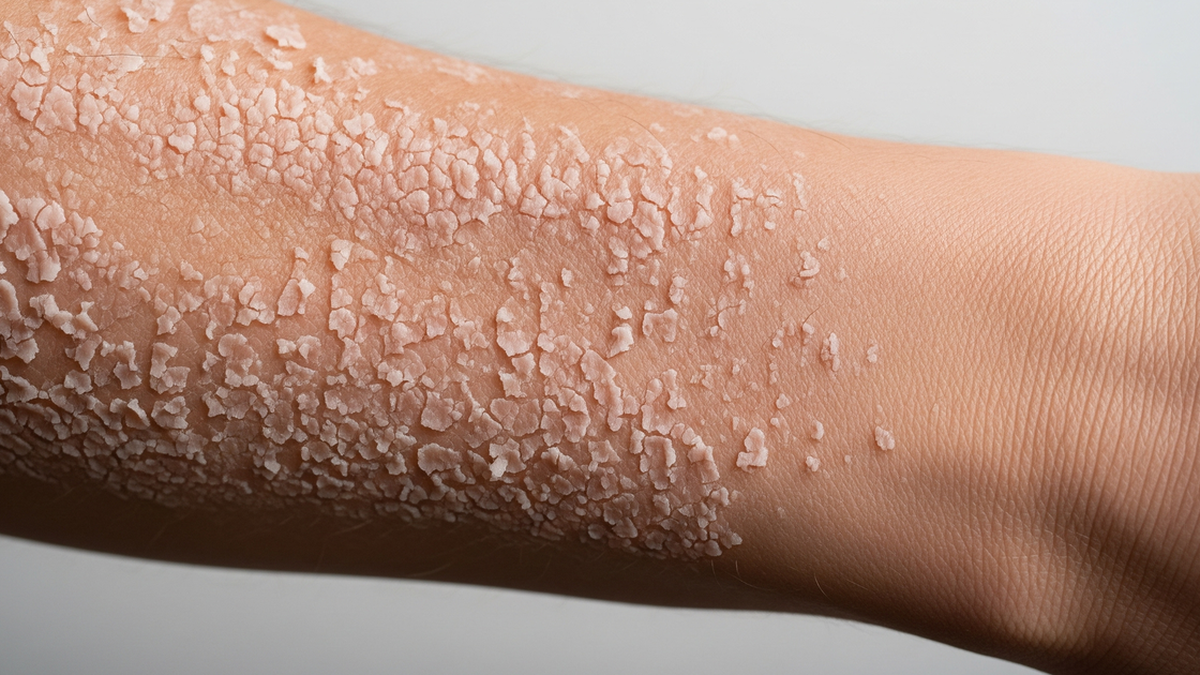


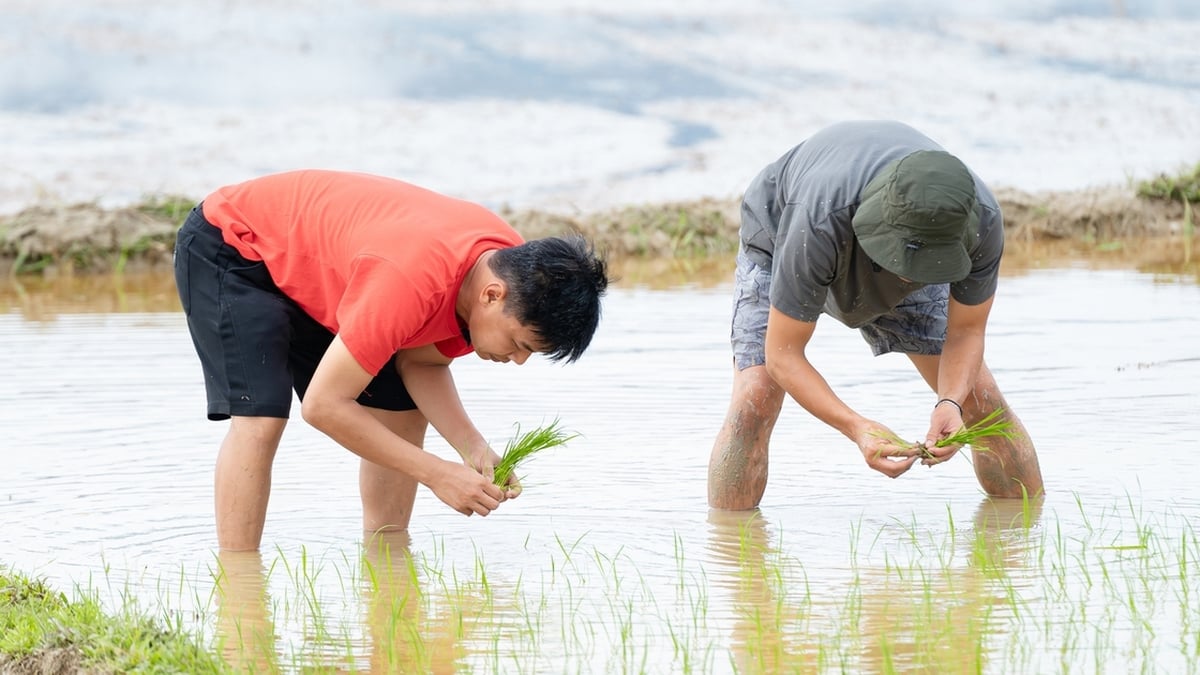

















![[Photo] National Assembly Chairman attends the seminar "Building and operating an international financial center and recommendations for Vietnam"](https://vphoto.vietnam.vn/thumb/1200x675/vietnam/resource/IMAGE/2025/7/28/76393436936e457db31ec84433289f72)










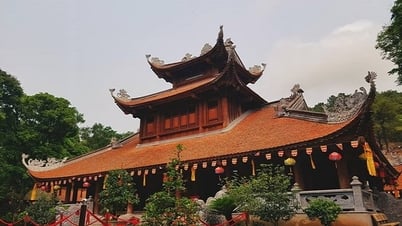







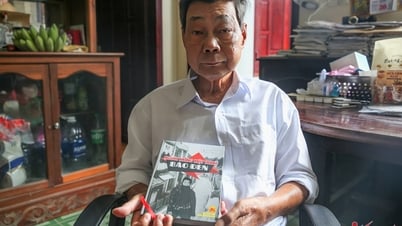

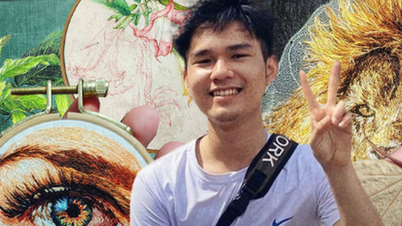

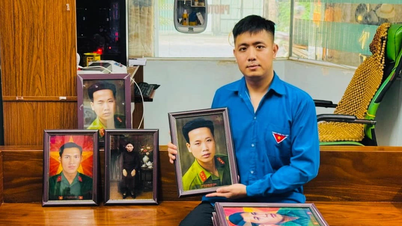


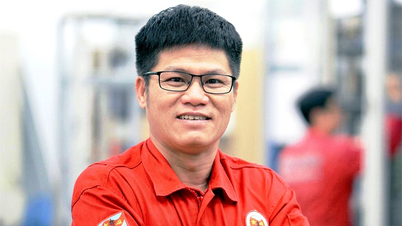




















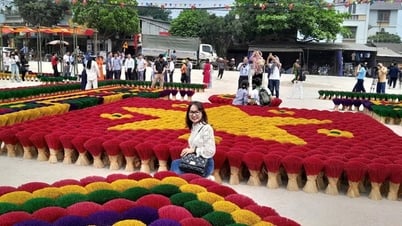

























Comment (0)